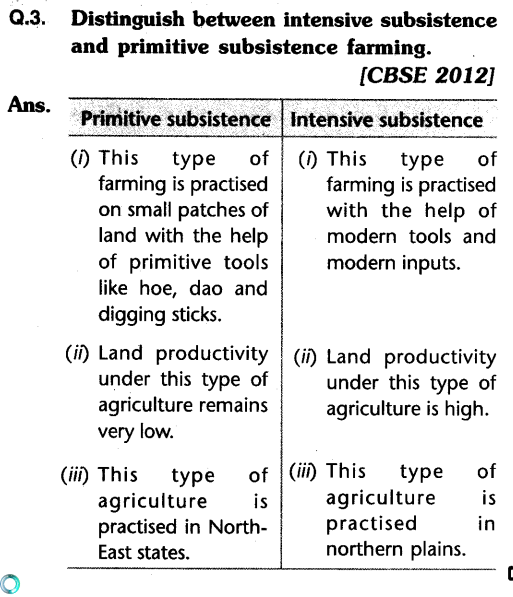Checking Out the Distinctions Between Commercial Farming and Subsistence Farming Practices
The duality in between commercial and subsistence farming methods is marked by varying purposes, operational scales, and resource usage, each with profound implications for both the environment and culture. Conversely, subsistence farming stresses self-sufficiency, leveraging conventional approaches to maintain family requirements while supporting neighborhood bonds and cultural heritage.
Economic Goals
Economic goals in farming practices typically dictate the approaches and scale of procedures. In commercial farming, the main financial goal is to make the most of revenue. This needs a focus on effectiveness and performance, accomplished through innovative innovations, high-yield plant selections, and comprehensive use pesticides and fertilizers. Farmers in this version are driven by market needs, aiming to create big amounts of assets available for sale in worldwide and nationwide markets. The focus is on accomplishing economic situations of scale, making certain that the expense each output is lessened, thereby increasing earnings.
In contrast, subsistence farming is predominantly oriented towards satisfying the prompt demands of the farmer's family members, with excess production being minimal - commercial farming vs subsistence farming. While business farming is profit-driven, subsistence farming is centered around sustainability and durability, showing a fundamentally various collection of financial imperatives.

Scale of Workflow
When taking into consideration the scale of procedures,The difference in between commercial and subsistence farming ends up being particularly obvious. Commercial farming is defined by its massive nature, usually including considerable tracts of land and using innovative machinery. These procedures are normally incorporated right into global supply chains, creating vast quantities of plants or animals meant to buy in domestic and global markets. The range of business farming allows for economic climates of scale, resulting in minimized costs per device via automation, increased efficiency, and the capability to purchase technological improvements.
In raw contrast, subsistence farming is usually small, focusing on creating simply enough food to satisfy the instant needs of the farmer's household or regional community. The land location entailed in subsistence farming is commonly restricted, with much less access to modern innovation or automation.
Resource Use
Commercial farming, defined by large-scale procedures, frequently uses sophisticated technologies and mechanization to enhance the use of sources such as land, water, and fertilizers. Accuracy farming is increasingly taken on in industrial farming, using data analytics and satellite modern technology to keep track of plant health and wellness and maximize resource application, more enhancing return and source effectiveness.
On the other hand, subsistence farming operates on a much smaller sized range, mainly to check meet the instant needs of the farmer's house. commercial farming vs subsistence farming. Resource usage in subsistence farming is often restricted by financial restrictions and a dependence on typical techniques. Farmers usually make use of hand-operated labor and natural sources available locally, such as rain and organic compost, to grow their plants. The focus is on sustainability and self-reliance rather than optimizing outcome. Consequently, subsistence farmers might face challenges in source management, consisting of minimal accessibility to improved seeds, plant foods, and watering, which can restrict their capacity to improve performance and success.
Environmental Impact

On the other hand, subsistence farming, exercised on a smaller range, generally utilizes traditional strategies that are a lot more in harmony with the surrounding environment. While subsistence farming typically has a lower ecological footprint, it is not without challenges.
Social and Cultural Ramifications
Farming techniques are deeply linked with the cultural and social material of areas, affecting and reflecting their worths, customs, and financial structures. In subsistence farming, the focus is on growing adequate food to satisfy the instant requirements of the farmer's family members, click over here often promoting a solid sense of area and shared responsibility. Such methods are deeply rooted in regional traditions, with knowledge gave with generations, therefore protecting cultural heritage and reinforcing public ties.
Conversely, commercial farming is mainly driven by market needs and productivity, commonly resulting in a change in the direction of monocultures and large-scale procedures. This approach can cause the disintegration of typical farming techniques and cultural identities, as regional customs and expertise are supplanted by standardized, industrial techniques. In addition, the concentrate on effectiveness and earnings can often decrease the social cohesion located in subsistence areas, as economic transactions replace community-based exchanges.
The duality in between these farming methods highlights the more comprehensive social effects of farming options. While subsistence farming supports cultural connection and area interdependence, commercial farming straightens with globalization and economic development, commonly at the expense of typical social structures and social variety. commercial farming vs subsistence farming. Balancing these aspects stays an essential difficulty for lasting farming advancement
Final Thought
The evaluation of business and subsistence farming practices exposes considerable differences in goals, scale, resource usage, environmental influence, and social implications. Industrial farming prioritizes earnings and performance through massive operations and progressed modern technologies, frequently at the price of ecological sustainability. Conversely, subsistence farming emphasizes self-sufficiency, utilizing conventional approaches and local resources, consequently promoting cultural conservation and neighborhood cohesion. These contrasting strategies highlight the intricate interaction in between financial development and the need for environmentally sustainable and socially comprehensive farming techniques.
The duality between commercial and subsistence farming methods is content marked by differing purposes, operational scales, and resource utilization, each with profound effects for both the setting and society. While industrial farming is profit-driven, subsistence farming is focused around sustainability and strength, showing an essentially various collection of financial imperatives.
The difference between industrial and subsistence farming becomes particularly obvious when thinking about the range of procedures. While subsistence farming sustains cultural connection and area connection, industrial farming straightens with globalization and financial development, frequently at the expense of traditional social frameworks and cultural diversity.The exam of industrial and subsistence farming methods reveals substantial distinctions in purposes, scale, source usage, environmental impact, and social ramifications.